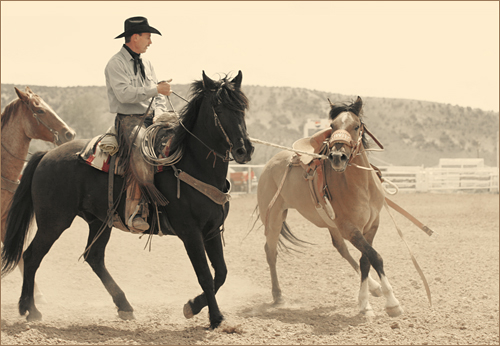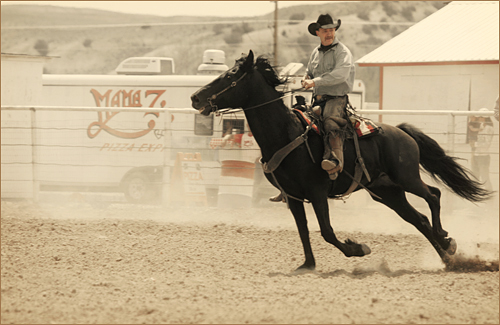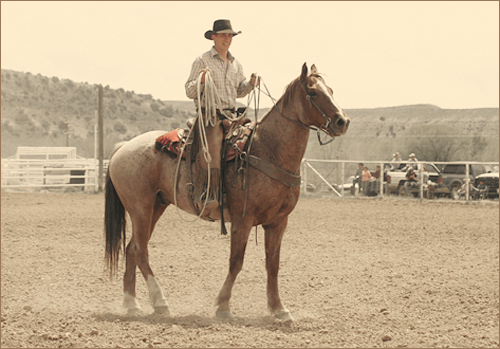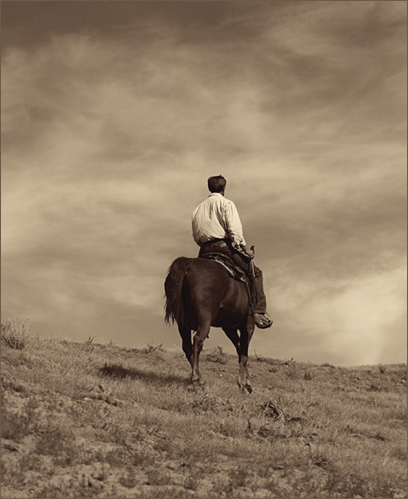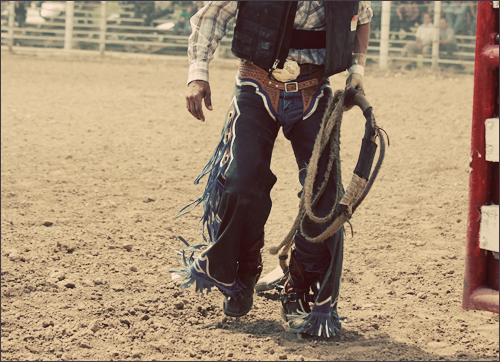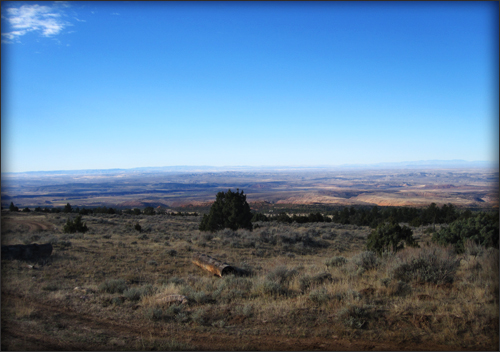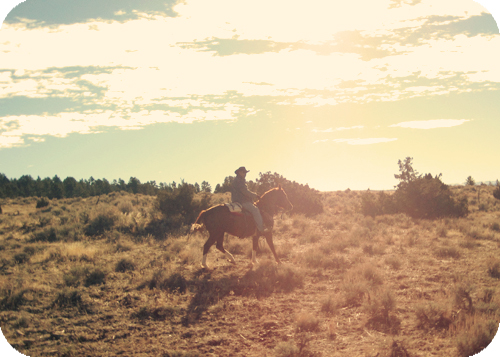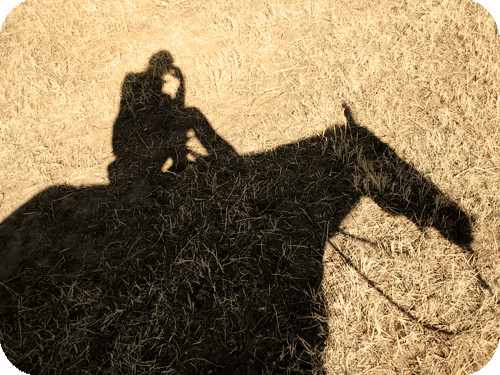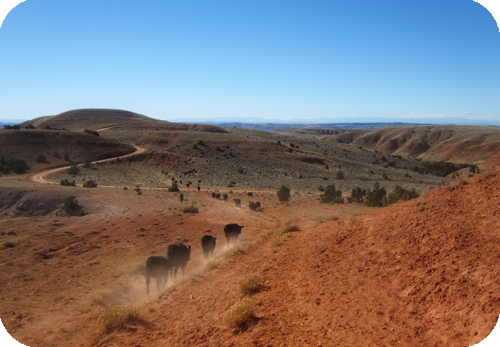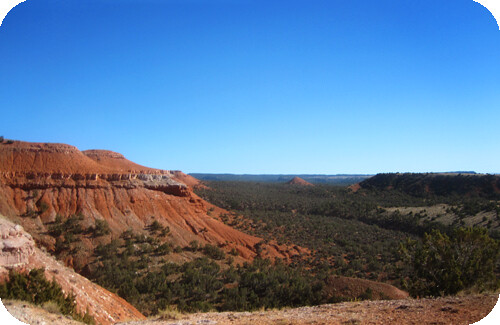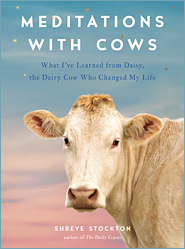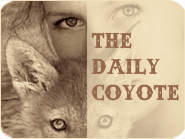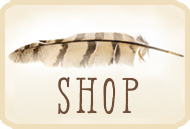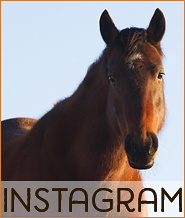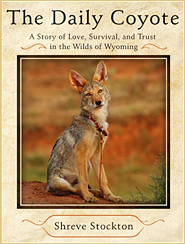Anonymous Cowboy
There are some things that blatantly give away that I am a transplant and am not from Wyoming. I can be found wearing Fluevogs. I avoid brandings when at all possible. And I’m not into rodeos.
I respect the ranch-bred traditions from which the rodeo organically grew but the contemporary incarnation of rodeo feels empty to me. To me, if you’ve seen one, you’ve seen ’em all, and I never go unless I’m with the ambulance. I silently root for the bulls. I busy myself with taking photographs so that I don’t think too much. And I watch the real cowboys.
During the rough stock events (bulls and broncs), there are always two men on horseback, ever-present in the ring but discreet, hanging back during each contestant’s ride. Once the rider is bucked off, the job of these two men is to bring the angry bulls and frantic broncs back to the front of the arena, guiding them through a large gate and back into the holding area.
This is where real horsemanship can be seen: in the absolute union these men have with their mounts, in the confident sensitivity with which they use their own horses to guide the others. These traits, these abilities, are the real root of rodeo.
Final Ride
Houdini died yesterday.
He was Mike’s horse. These men and their horses…. it’s something to behold.
The relationship is so intimate.
Mike raised Houdini from birth; I can only imagine how many thousands of miles those two traveled together over the course of three decades, breaking trails through true wilderness, through youth and love and birth and death and new wildernesses, new challenges, new loves, more death.
Words don’t solve the pain of loss, but the words I heard myself saying to Mike – words I didn’t know until I heard myself speaking them – were words I knew I would need to remember:
It would be worse if they lived longer than we did. If they did, we would never know – and never be able to control – how they were treated when we were gone. That would be harder to bear.
Yee Haw
Worked the ambulance during the rodeo this weekend.
These guys didn’t want our help.
But I had a nice view.
Birth & Death
One morning last week or the week before, Mike showed up at my house at 7am. He had a meeting a quarter way across the state that he had to attend and he was stopping by to give me the morning cow report since I would be the only one on the place overseeing any births that day.
Calving had been going incredibly well, with most of the cows calving between 11am and 1pm, and only a few as early as 6am or as late as 6pm. Only one heifer had needed assistance with her birth, but she was an unusually small cow, which was why she needed help getting her baby into this world. I knew I’d be holding down the homestead all day but did not expect much work other than strolling through the cows every couple of hours as they grazed on hay and lounged about.
Mike burst that bubble when he arrived with the following information: “Two heifers calved this morning, one pair is fine, the other calf isn’t up – I found it with the sac on its face and pulled it off and it took a massive breath but hasn’t been up to suck yet – and another heifer is prolapsed but hasn’t calved.”
Translation: Two first-time mothers had their babies. One pair (mother and calf) were fine but the other calf had not been cleaned off by its mother, and the calf could have died of suffocation as the water sack was still covering its face. Mike saw this and pulled it off, but had to leave before he saw the calf get up and drink successfully, but he did note the number of the cow standing beside this calf so that I could observe. A third first-time-mom was prolapsed; this means her guts had come out of her body during labor.
And then he was out the door, with a long drive ahead of him.
I said a swear word in my head and pulled on boots and a heavy coat and hat and scarf and grabbed leather gloves – it was a chilly morning but, worse than that, it was really windy – and hiked up to Mike’s house. I found the calf and a very disinterested heifer standing next to it and her number matched the number Mike had given me. The calf was stretched out on the ground – it’s head was not up – this is not a good sign. I checked to see if it was still alive and it was, it was still breathing, though its breaths were labored and it was still completely wet – this, too, is not good when a calf is weak to begin with and the morning is cold and windy.
But, before I could attend to the calf, I had to see the prolapsed cow. I had called the vet as I was getting dressed and he said that if I could get the cow to the corrals and contain her, he could come by and put her back together and everything would probably turn out just fine. When I saw the cow, I knew that plan would be impossible. Even though she was lying down, I could see the mass coming out her body was simply too large. It would have been painful and dangerous to have her walk down to the corrals, especially because there was one unavoidable stretch of sagebrush and weeds that could have easily caught or punctured the mass of guts that would have trailed behind her.
I knew she needed to be transported via trailer but I was certain I couldn’t accomplish that task on my own. So, THIS GUY and his neighbor came to the rescue. They pulled up with horse trailer in tow (with a saddled horse inside) hopped out, scoped the scene, and in half a minute, they had a plan in place. While M bridled his horse, S drove the truck and trailer into the field, not twenty feet from the cow, and backed it perpendicular to the fence. M opened the back of the trailer and made sure the door fit snugly against the fence, creating an L shaped corridor along the fenceline and into the trailer.
As M approached the prolapsed cow on horseback, she stood, and calmly walked the fenceline to the trailer. She then had to turn and enter the dark trailer, and balked, but I bounced into her intended path and she stopped, calmly reconsidering her options. M threw a large, easy loop with his lariat around the cow’s head and chest, but he didn’t cinch it – it just sat loosely around her, ready to be tightened if she decided to make a run for it in the wrong direction. S cooed at her, urging her to take a few steps forward again and step into the trailer, and she did just that. M wound up his lariat, loaded his horse in the compartment behind her, gave me wink, and off they went.
M was headed to the sale barn in town, which is where the vet was spending the morning preg testing cows, and he offered to drove the cow to town and hand her off directly to the vet. The time spanning their arrival to their departure was less than ten minutes. These guys are pros, and it was simply beautiful to watch them work with such calm competence.
I then turned my full attention to the calf. This calf was large ~ not abnormally large, but closer to 100 pounds than 70 pounds and I couldn’t carry it. I had to move it out of the wind, so I used my one of my newly acquired EMT emergency moves. I ran to Mike’s house, got a sheet, laid it beside the calf, flipped the calf onto the sheet, and dragged the calf to shelter. I sat beside him with his head in my lap and dried him off, got him warmed up, and tried to figure out what exactly was wrong with him.
The calf was having a lot of trouble breathing. He also had some sort of deformity with his head ~ I couldn’t put my finger on exactly what was wrong with his head, visually, just that something was very, very off. He did not move easily on his own ~ his limbs were stiff and uncoordinated and his tongue was thick and heavy, filling the side of his mouth. He did not have the sucking reflex when I put my finger in his mouth, and his tongue kept sliding into a weird position which further blocked his airway. (EMT trivia! A child’s tongue, in relation to the mouth, is proportionately larger than an adult’s tongue, therefore, it is more likely to cause airway obstruction and hinder respirations)
Everything about this calf seemed like the result of poor perfusion (EMT vocab term! lack of oxygen and buildup of waste material at the cell level) As I sat in the dirt with the calf’s head on my lap, I wished I had an oxygen tank and mask. I totally would have put it on the calf. Instead, I continued to rub the calf and talk to it, and then, perhaps an hour later, seeing no change in the calf, I left it on the sheet and walked home, checking the rest of the cows. It was either going to live or it was going to die.
I tried to work for an hour and then I ran up to Mike’s to check on the calf again. It was still laying down all the way, but it was breathing. What I found odd and irritating was that it’s mother was completely ignoring it. She was on the other side of the pasture, sleeping. Sometimes, a heifer will ignore her baby, but it really is rare. This cow’s complete lack of attention to this calf struck me as off, too, though I couldn’t place why.
I sat with the calf and talked to it some more, and it managed to hold it’s head up for short periods of time. His sucking reflex was evident, too, though it was quite weak. Both these developments made me extremely hopeful. I went to Mike’s house and prepared a bottle of Daisy’s colostrum milk that I had frozen when Frisco was born (she produced more than he could drink), and tried to help the calf drink a little. But it was difficult, as the calf was still so weak and uncoordinated, and he only drank, at most, a few tablespoons.
After a while I went back home, and while I was there, the vet called. The cow was dead. Everything had gone fine ~ he had put her back together, stitched her up, and the cow had been stable under anesthesia, but when the vet gave her a shot to bring her out from anesthesia, her heart stopped. “You’ve got a dead calf out there,” he said, as we were ending the call. “What?” I asked, totally confused. “She calved already,” the vet told me; “she calved during the prolapse. So her calf is out there, but it’s probably dead.”
I ran back up to Mike’s house. I scoured the pasture and draws, looking for a dead calf, and found none. I tracked down the cow that Mike had said was the mother to the calf I had been nursing all morning. I looked at her udder. It was small, and, while a heifer can have a small udder, hers was definitely not full enough to indicate having calved. “I bet this calf is the prolapsed cow’s calf!” I thought to myself, very pleased with the thought. I was heartbroken that the cow had died but was determined to keep her calf alive.
When Mike finally called on his drive home, I asked him if he had seen the birth of the calf in question or not. He had not actually seen it happen ~ he had just seen the obviously-newly-born calf with a heifer standing next to it and, in the rush of the morning, assumed it was its mother.
When Mike got home, he carried the calf – who had still not been able to stand up all day – into his house and built a fire. I sat on the floor in front of the fireplace with the giant newborn calf on my lap, and, as it got warmer and warmer, the calf seemed to get stronger and friskier. I pointed out the head deformity to Mike, who was able to pinpoint what was off ~ there was a puffiness around the calf’s throat and jaw, most likely lividity – the settling of fluids – that probably occurred during the difficult birth. (This completely disappeared within days.)
I warmed up the bottle again, and this time, the calf drank it all! He even stood up and was able to teeter around. Mike and I built a playpen of sorts out of furniture, effectively penning the calf in a small area in front of the fireplace for the night, and though he was still somewhat weak the next morning, his vitality and coordination were steadily improving.
This will seem like a tangent, but it’s not: Mike’s cows are numbered; the numbers have meaning (birth year, linage) and, while this might seem impersonal, Mike and I know all the temperaments and personalities and quirks of each cow; their numbers are like names to us. Kind of like that couple who named their dog Diogee.
There’s a cow whose number-name is 412, and I have always been acutely aware of this cow’s goings-on, because she’s my birthday cow. Her number is my birthday. She’s like my sister-cow. 412 had given birth two days prior, to a stillborn calf. This isn’t terribly common, but it is terribly sad. 412 could not accept that her baby was dead. She stood under tree where she had given birth, guarding the tiny corpse, nudging it periodically, urging it to come to life. She would not leave her calf. She had held vigil for two days and counting.
Since the days were still cold, we left the calf where it was, with her. There was the outside possibility that twins would be born in a matter of days and, since cows generally only raise one, orphaning the second, we could give one to 412 to raise. Twins were not born, but we now had an orphan calf.
The next morning, Mike rode his 4-wheeler down to 412, snatched up her baby, and drove to the corrals with 412 hot on his heels. He put her into a small stall. We then drove the orphan calf down to the corrals. While I held him, Mike quickly skinned 412’s dead calf. We cut holes in the four corners of the pelt and fit the orphan baby’s legs through these holes, the pelt covering his back. This is called ‘jacketing.’ A mother cow knows her baby by smell, and will not let any other calf drink her milk. We had to make 412 believe that this new calf was really her calf. That is why we gave it the ‘jacket’ of the dead calf.
We put the calf in with 412 and she rushed to him, mooing gently, licking him, absolutely in love. It was her baby! And she was A-OK with him nursing her. He latched on and drank till he was full. Two days later, we removed the jacket; by that time, 412’s milk had circulated through the calf and his scent was hers. And they are a pair, and it is a beautiful sight, especially as it had been borne from dual tragedies.
Down The Mountain
View from the top.
Five years ago Tuesday, I moved to Wyoming.
MC, L, and I spent the day trailing off the mountain.
I was the first one saddled. L’s horse was lame so Mike rode Sunshine – the verrrry fat paint, who is essentially retired – and L rode Mike’s newish horse, Kota, who is also very fat because he hasn’t been ridden all summer.
Kota is also pretty green – not totally broke – but L was up for the challenge, and Mike was all too willing to give it to him.
We found the cows, and started moving them down the mountain. The older cows know the way and know it’s time, and the rest of the herd follows the lead.
The day was SO gorgeous!
The last two years, this ride has been terribly cold and snowy!
Because it’s an easy trail, it’s a good day to fine-tune the horses.
L helped Kota become comfortable away from Ranger and Sunshine (Kota likes to follow, because new things make him nervous).
Meanwhile, I made Ranger stay at the back, which really pissed him off.
He likes to be the lead on a trail. It was a good opportunity for him to practice patience and manners.
At the halfway point, we let the cattle rest a while. Kota was in love with L by then. Mike did a quick run back through some of the treed areas to gather any stragglers we might have missed.
I hate waiting.
I just want to ride and ride and ride, all the way down without stopping.
It was a good time for me to practice patience and manners.
Ranger and I guarded the gate until all the cattle were together…
Once they’re out, they know exactly where they’re going.
They just line out and walk! You can see little black dots in a perfect curving line all the way to the midpoint of this image. The lead cows are already out of sight.
Beauty!
I love this place.
